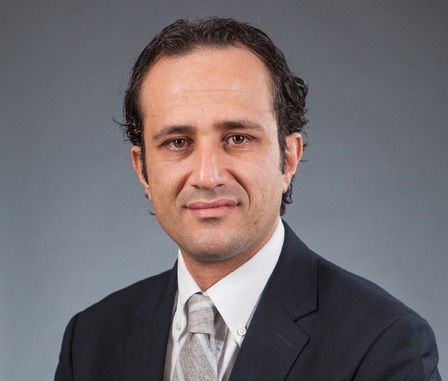
A randomised, multicentre study has found improvement in the long-term freedom from long-standing persistent atrial fibrillation (AF) in patients who underwent an ablation plus empirical electrical left atrial appendage isolation strategy. No major complications were reported.
Results of the BELIEF study were presented by Luigi Di Biase (Albert Einstein and Montefiore Hospital, New York, USA and Texas Cardiac Arrhythmia Institute at St Davids Medical Center) at a Hot Line session of the European Society of Cardiology Congress (ESC; 28 August – 2 September, London, UK).
Di Biase told delegates that long standing persistent atrial fibrillation (AF) is the most challenging type of AF to treat with catheter ablation and noted that several studies have shown that, in addition to pulmonary vein isolation, other non-pulmonary vein areas may be the source of initiation and maintenance of AF. One of those sources, according to different studies, highlighted Di Biase, is the left atrial appendage (LAA).
Given this rationale, Di Biase and colleagues set out to assess whether in patients with long standing persistent AF, electrical isolation of the LAA, in addition to extensive pulmonary vein antrum and triggers ablation could improve freedom from AF and atrial tachyarrhythmias. This is the first time that this subject is studied in a prospective randomised fashion, noted Di Biase.
The randomised, multicentre, parallel-group trial enrolled 173 patients with long-standing persistent AF who were refractory to antiarrhythmic drugs. They were randomly assigned to extensive radiofrequency ablation plus empirical electrical LAA isolation (Group 1, N=85 patients) or extended pulmonary vein antrum and non-pulmonary vein triggers radiofrequency ablation (Group 2, N=88).
Ablation success was assessed at 12 and 24 months. Di Biase reported that 62 patients underwent a second procedure (27 patients in Group 1 and 35 in Group 2) and noted that electrical LAA isolation was performed in all patients during repeat ablation.
The primary endpoint was freedom from atrial fibrillation and secondary endpoints were hospitalisation due to heart failure or arrhythmia-related causes, mortality and incidence of stroke.
Di Biase highlighted that there were no patients lost to follow-up and reported that single procedure success rate at 12-months follow-up was 56% in the group were the appendage was electrically isolated and 28% in the group were the appendage was not electrically isolated. “When cumulative procedure was performed after 1.3 procedures the success rate went up to 76% in the group were the appendage was isolated and increased to 56% in the group that had appendage isolation during the repeat procedures.”
The mean radiofrequency time in Group 1 was longer (93.1±26.2 minutes) than the time used in Group 2 (77.4±29.9 minutes), however, it was not statistically different, Di Biase said.
The study also found that isolation of LAA in addition to standard ablation, was associated with 55% reduction in overall recurrence, after adjusting for age, gender and left atrial appendage diameter.
In terms of secondary endpoints, Di Biase said, there was no major statistical difference for hospitalisation for recurrent AF (Group1: 25%, Group 2: 22%) or heart failure (Group 1:2.4%, Group 2:0%).
There were no reports of stroke or transient ischaemic attack in the ablation plus electrical LAA isolation group. In the standard ablation only group there were four patients who had a stroke, Di Biase noted that none of them were part of the group who underwent re-do procedures with electrical LAA isolation and there were no deaths reported during the study period.
Regarding complications, Di Biase noted that there was one pericardial effusion in each group and one gastrointestinal bleeding in the standard ablation only group.
Emphasising on the relevance of the BELIEF study, Di Biase said: “We believe that when atrial fibrillation progresses from paroxysmal to persistent and to long-standing persistent form the relevance of the pulmonary vein-as a trigger of atrial fibrillation-is reduced and the relevance of other non-pulmonary vein trigger areas, which are not CFAE, are relevant in atrial fibrillation. In patients with long-standing persistent atrial fibrillation we do believe that the left atrial appendage plays a major role.”
In conclusion, Di Biase said, BELIEF has shown that “both after a single and redo procedures in patients with long-standing persistent AF, the empirical electrical isolation of the LAA improve the long-term freedom from atrial arrhythmias without increasing complications” He highlighted that future studies examining the physiopathology of these findings are necessary.












